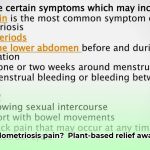Want to eat healthier but feel overwhelmed by all the different plant-based diets out there? This guide breaks down popular plant-based eating plans, like the New American Plate and the Plantrician Plate, showing you what works best and how to make it fit your life. We’ll give you simple, step-by-step instructions, helpful tips, and advice from nutrition experts so you can confidently create delicious and healthy meals. Whether you’re a veteran vegan or just starting out, we’ll help you build a sustainable plant-based eating plan that works for you. For a handy meal plan, download this helpful plant-based diet PDF.
Diving into Plant-Based Diets for Weight Management and Holistic Well-being
Ready to explore the exciting world of plant-based eating? Let’s discover how different plant-based plate models can help you achieve your health goals and enhance your overall wellness. There are numerous approaches, each with its unique benefits and considerations. This comprehensive guide will help you navigate these options and find the best fit for your individual lifestyle and needs.
Deciphering Various Plant-Based Eating Plans
Several prominent plant-based eating plans can guide you towards a healthier and more sustainable lifestyle. Each offers a slightly different approach to what and how much you eat. But how do they truly differ, and which one will harmonize best with your personal goals and daily routines? That’s what we’ll explore in detail here.
We’ll delve into four well-known models: the New American Plate, the Plantrician Plate, the Vegan Plate, and the Whole Food Plant-Based (WFPB) approach. While all emphasize fruits, vegetables, and whole grains, they diverge in their approaches to protein sources, dairy alternatives, the level of food processing allowed, and supplementation recommendations.
The New American Plate: A Flexible and Moderate Transition
The New American Plate provides a flexible framework that can integrate both plant-based and, optionally, small amounts of animal-based foods. It accentuates generous portions of non-starchy fruits and vegetables (aiming for half the plate), alongside a smaller serving of lean protein, which can be either plant-sourced (like legumes or tofu) or, if desired, lean meat or fish. Whole grains form another crucial component of this plan, ideally unrefined, while refined grains and added sugars are purposefully minimized. This balanced approach aims to reduce cancer risk and promote overall health by prioritizing nutrient-dense foods while limiting processed and less healthful options. It’s particularly well-suited for individuals who are looking for a gradual transition and prefer not to completely eliminate animal products.
The Plantrician Plate: A Plant-Based Prescription for Optimal Health
Developed and advocated by physicians specializing in plant-based nutrition, the Plantrician Plate adopts a stricter plant-based approach, emphasizing exclusively whole, unprocessed plant foods. It prioritizes nutrient density from a wide array of vegetables, fruits, legumes, nuts, seeds, and whole grains. While inherently vegan, it focuses intensely on obtaining all necessary nutrients from plant sources, underlining the careful attention needed to avoid potential nutrient deficiencies. Vitamin B12 is of particular concern and typically necessitates supplementation. The Plantrician Plate empowers individuals to make well-informed choices centered on optimizing their personal health and preventing chronic diseases.
Vegan Plate Models: Diverse Pathways to Plant-Powered Nutrition
An abundance of variations exists within the broader definition of the “vegan plate,” all united by the exclusion of animal products. This approach emphasizes creativity, versatility, and leveraging seasonal, locally sourced produce to craft meals that are both delicious and nutritionally complete. Careful attention is frequently given to supplementation strategies to proactively address potential nutrient gaps, especially concerning vitamin B12, vitamin D, and omega-3 fatty acids. Vegan plate models extend beyond pure health considerations, often encompassing ethical and environmental dimensions, aligning dietary choices with broader values related to animal welfare and sustainability.
Whole Food Plant-Based (WFPB): Unprocessed and Unrefined
The Whole Food Plant-Based (WFPB) approach goes beyond simply excluding animal products; it emphasizes the consumption of plant foods in their most natural, unprocessed state. This means prioritizing whole grains over refined grains, whole fruits over fruit juice, and avoiding or minimizing processed vegan foods, added oils, and refined sugars. The WFPB approach is rooted in the belief that whole, unrefined plant foods offer the greatest concentration of nutrients and protective compounds, maximizing health benefits and minimizing exposure to potentially harmful additives or processed ingredients.
Navigating the Plant-Based Landscape: Selecting the Right Plate for You
The most suitable plant-based eating plan is highly individualized, shaped by personal preferences, health status, ethical considerations, and lifestyle factors. Are you embarking on a complete dietary transformation or merely seeking to incrementally incorporate more plant-based meals into your existing routine? Are you drawn to a strictly vegan approach, or would you prefer a more flexible plan that allows for occasional consumption of small amounts of animal protein or other animal products?
Consulting with a registered dietitian or nutritionist is strongly recommended to receive personalized guidance. They can assist you in accurately assessing your individual nutritional needs, navigating the nuances of different plant-based diets, and crafting a customized plan that aligns with your goals and promotes long-term sustainability.
Practical Steps to Transition to a Plant-Based Lifestyle
Here’s a structured approach to facilitate a seamless transition towards a more plant-focused dietary pattern:
- Embrace Gradual Change: Resist the urge to overhaul your entire diet overnight. Instead, start by strategically incorporating one additional plant-based meal each day, gradually expanding your intake of plant-based foods over time. Consistency and mindful progression are paramount for building sustainable habits.
- Explore and Experiment: Delve into the diverse array of plant-based eating plans available, actively experimenting with different approaches to discern which one resonates best with your personal preferences, culinary inclinations, and day-to-day lifestyle demands. Each plan offers varying degrees of flexibility, allowing you to tailor your approach to your unique circumstances.
- Prioritize Whole Foods: Make a conscious effort to prioritize whole, unprocessed plant foods that are naturally abundant in essential nutrients, such as vibrant fruits, colorful vegetables, fiber-rich legumes, and unrefined whole grains. Simultaneously, strive to minimize the consumption of heavily processed vegan foods, added sugars, and excessive amounts of unhealthy fats. Nutrient-dense choices offer enhanced health benefits and contribute to greater satiety.
- Monitor Your Health and Listen to Your Body: Schedule regular check-ups with your healthcare provider, including periodic blood tests, particularly when making significant dietary modifications. This proactive approach enables you to closely monitor key biomarkers, such as vitamin B12 and vitamin D levels, and make timely adjustments to your dietary plan as needed. Pay close attention to any changes in your energy levels, digestion, or overall well-being, and consult with a healthcare professional if you have any concerns.
Transitioning to a plant-based diet is a journey of discovery and self-improvement, not a race against the clock. Practice self-compassion, acknowledge and celebrate your progress along the way, and savor the process of exploring new flavors, expanding your culinary horizons, and experiencing the numerous health benefits that plant-based eating has to offer. Never hesitate to seek guidance and support from qualified healthcare professionals to ensure that you are meeting all of your individual nutritional needs and optimizing your overall health and well-being.
Comparative Analysis: Plant-Based Diet Plates for Optimal Nutrient Intake
Want to unlock the secrets to thriving on a plant-based diet? Mastering the art of plate construction is key. Different plant-based eating approaches exist, but they all share common ground: prioritizing whole, unprocessed foods. But how can you compare these different approaches to ensure you’re getting the nutrients you need for optimal health and vitality? Let’s dive in and explore effective strategies for comparative analysis.
Understanding the Plant-Based Plate Method
The “plate method” offers a simplified and visually intuitive approach to plant-based meal planning. Envision your plate as a practical guide for constructing balanced meals; most variations propose dividing your plate into distinct sections: half dedicated to an assortment of non-starchy fruits and vegetables, a quarter allocated to whole grains or starchy vegetables, and the remaining quarter designated for plant-based protein sources. However, it’s important to recognize that the plate method is not a rigid, one-size-fits-all prescription. Simply filling half your plate with pasta and the other half with fruit does not constitute a balanced and nutritious meal; careful consideration must be given to the specific types of foods included and their respective nutrient profiles.
Critical Evaluation: How to Compare Different Plant-Based Diet Plates for Optimal Nutrient Intake
Comparing different plant-based dietary approaches requires a discerning eye and a comprehensive understanding of key nutritional factors. Here are some essential elements to consider during your comparative analysis:
- Macronutrient Harmony: Scrutinize the proportions of carbohydrates, protein, and fats within each plate model. Are these macronutrients balanced to effectively meet your individual energy requirements, support your level of physical activity, and promote overall metabolic health? An optimally constructed plate will offer a judicious mix of all three macronutrients, avoiding excessive amounts of any single component.
- Micronutrient Abundance: Go beyond simply counting calories; meticulously assess the abundance and diversity of essential vitamins, minerals, and antioxidants present in each plate. A truly nutrient-rich plate will showcase a vibrant tapestry of colorful fruits and vegetables, offering a broad spectrum of micronutrients that support various physiological functions and protect against chronic diseases.
- Fiber Content and Digestive Health: Recognize the paramount importance of dietary fiber for maintaining optimal digestive health, promoting stable blood sugar levels, and fostering a healthy gut
- Plant Based Diet Breast Cancer: Research-Based Benefits - December 16, 2025
- Plant-Based Diet Ulcerative Colitis Remission: Proven Benefits - December 15, 2025
- Plant-Based Diet and Fibroids: Reduce Symptoms Now - December 13, 2025










